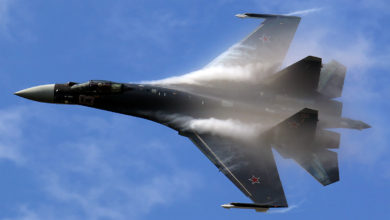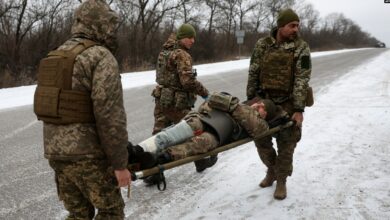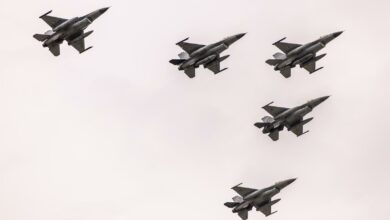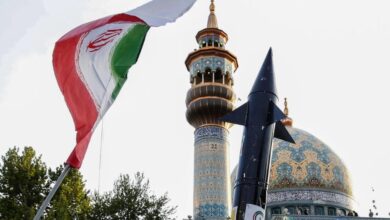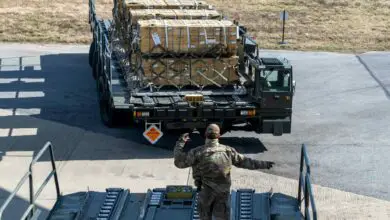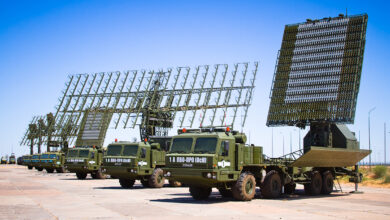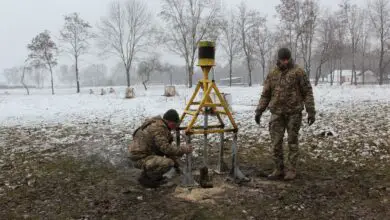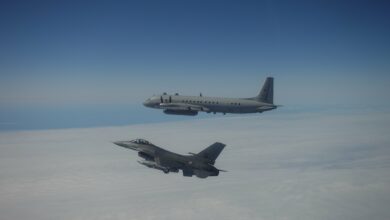
Chinese General Secretary Xi Jinping’s support of Russian President Vladimir Putin’s adventurism in Eastern Europe is not just coincidentally similar to Japan’s grand strategic maneuvers in the late 19th and early 20th centuries.
China is realizing that to seize Taiwan, it will not prevail against the United States and its broad alliance of trading democracies. Therefore, Beijing has made fragmenting that coalition its diplomatic priority.
Imperial Japan faced a similar dilemma, caused by the fact that the economic and military might of the US and Europe were significantly greater than any individual power in Asia. Japan’s strategy was to wait patiently for strategic distractions of the other major powers so it could attack its isolated target quickly enough to secure a fait accompli.
Imperial Japan
Japan’s failure to secure allies before the 1894-1895 War with China resulted in the Triple Intervention of Russia, Germany, and France, overturning the Japanese peace Treaty of Shimonoseki and resulting in the return of the Liaodong Peninsula to Peking.
Japan then made an alliance with Great Britain in 1902, which gave it the freedom of action to pursue a war against Russia in 1904-1905 and to consolidate its war gains.
The First World War gave Tokyo the cover it needed to seize German Pacific possessions in 1915, and the Great Depression reduced public support for intervention against Japanese depredations in China in 1931 and 1937.
Japan then attempted to use the distraction of the Second World War in Europe to seize advantage in Asia in 1940 and 1941.
China and Taiwan
The implication is that China could ready its amphibious and follow-on forces to quickly mobilize to exploit a commitment of US forces elsewhere.
The Russian attack on Ukraine, or an Iranian closure of the Straits of Hormuz requiring a US intervention to re-open, could constitute a sufficient redeployment of US ground forces to permit a Chinese operation against Taiwan with minimal interference.

The US must pay close attention to not overcommit to Eastern Europe and to carefully deter both Russian and Iranian actions with a view to a careful economy of force.
China will only need about eight weeks to establish itself securely in Taiwan, even if it does not outright conquer it, and it will not be possible to eject at after that point. Airbases and coastal defense assets will be established on the parts of the island controlled by Beijing, and an amphibious operation by the US will be prohibitively risky.
Offensive Alliances
However, offensive alliances are far more difficult to coordinate, particularly between geographically distant allies, because they have incompatible objectives and adversaries.
Japan and Germany’s free-riding on each other’s efforts during the Second World War are archetypal. Japan did not permit Italian and German submarines stationed in Singapore to interfere with US shipping fuel supplies to the Soviet Union via the Persian Gulf, and Japan did not interfere with Soviet ships carrying US supplies to Vladivostok.
The Soviet Union never had to face a simultaneous enemy in both the West and the East.
Russia and China
The lack of coordination, or more accurately, the reciprocated exploitation by Russia and China, is evident in recent events.
In February, at Putin’s behest, China declared that Russia was a “friend without limits,” but by early March, China abruptly distanced itself from Russia’s invasion by referring to it as a “war.”
Obviously, Russian actions have aroused popular opinion, alliance and institutional reactions, and military mobilization in the West, all instruments that are now primed against a Chinese move against Taiwan.

In a war in East Asia, the US is now far more likely to receive prompt and significant economic assistance from European allies.
What concerns China is that the tranche of sanctions and financial restrictions are continuing to accumulate, and could evolve into a blockade, targeting of non-compliant neutrals and a close focus on Russian energy, on which China is particularly dependent.
Foundational Renewal
Democratic states tend, individually, to be military weak, but they form natural strategic alliances built on their trading and financial flows. The US pivot to Asia left Europe ill-equipped to deter and defend against an expansionist Russia.
This strategic alliance, which failed dramatically to protect Ukraine, needs a foundational renewal if it is to avoid being exploited by major power divide-and-conquer strategies in the future.
First, there needs to be rearmament: in one category, for example, NATO has shed nearly 30 percent of its tanks since 2000.
Second, strategic nuclear deterrence needs to be explicitly reintegrated into global strategy, as China is as likely to invoke nuclear threats in a dispute over Taiwan.
Third, states need to reduce energy and supply-chain dependence on potential adversaries.
Fourth, China and Russia should be aggressively targeted for domestic reform by value-based initiatives, along the lines of the 1975 Helsinki Accords.
 Dr. Julian Spencer-Churchill is associate professor of international relations at Concordia University, author of Militarization and War (2007) and Strategic Nuclear Sharing (2014), and former Operations Officer, 3 Field Engineer Regiment. He has published extensively on South Asia, conducting research in Pakistan for over 10 years.
Dr. Julian Spencer-Churchill is associate professor of international relations at Concordia University, author of Militarization and War (2007) and Strategic Nuclear Sharing (2014), and former Operations Officer, 3 Field Engineer Regiment. He has published extensively on South Asia, conducting research in Pakistan for over 10 years.
The views and opinions expressed here are those of the author and do not necessarily reflect the editorial position of The Defense Post.
The Defense Post aims to publish a wide range of high-quality opinion and analysis from a diverse array of people – do you want to send us yours? Click here to submit an op-ed.

